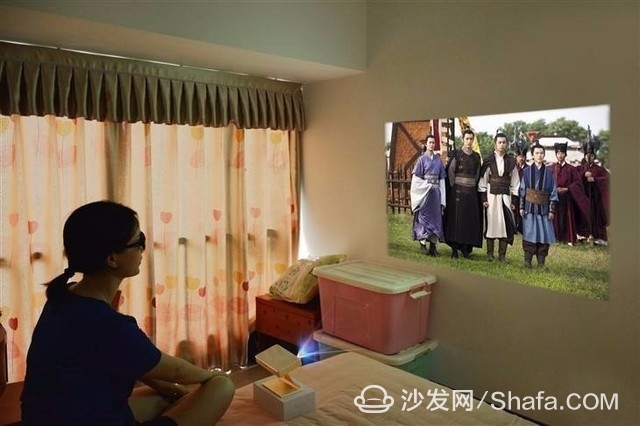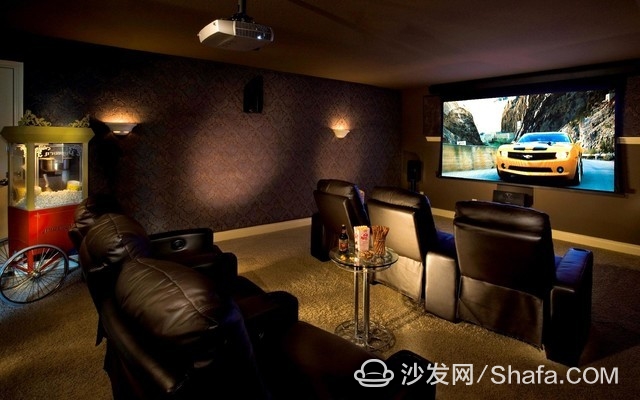In recent years, China's smart micro-projector market has experienced explosive growth, with more and more people opting to install intelligent micro-projectors at home. Many friends, including myself, have been asking questions about how to choose the best smart micro-projector, and one of the most common questions is whether resolution or brightness is more important.
Brightness or Resolution? Smart Micro-Projectors: What to Look for First
Many users prioritize resolution when purchasing a smart micro-projector, often overlooking the importance of brightness. While resolution does play a key role in image clarity, without sufficient brightness, the picture quality can't be fully appreciated. In my opinion, brightness is the core factor that should not be ignored.
Brightness Is the Core of Smart Micro-Projection. Without It, Everything Else Is Meaningless.
Brightness and resolution are both essential indicators for smart micro-projectors, as well as for all home and commercial projectors. However, when it comes to smart micro-projectors, I believe brightness is more critical than resolution, especially for users who frequently change their usage environments.
The main advantage of smart micro-projectors is their portability and flexibility. Unlike traditional projectors, they are lightweight and easy to carry, making them ideal for various scenarios. For example, you might use it at a friend’s house to watch a movie, or take it to a client meeting to present a PowerPoint. In such situations, the environment can vary greatly, which affects the performance of the projector.
The Biggest Feature of Smart Micro-Projectors Is Their Flexible Usage Scenarios
When presenting a PPT to a client, for instance, what matters most is that the text is clear and readable. High resolution may not make a big difference in such cases. However, if the brightness is insufficient, the image can appear dim and unclear, making it hard to view. Therefore, brightness should be the top priority for users who need a versatile projector.
Many Users Don’t Need Large Screens at All
Additionally, many users don’t project large screens on a daily basis. Instead, they use micro-projectors as a supplementary device for casual viewing. In these cases, the screen size is usually small—just a few dozen inches. From my experience, the difference between WXGA and 1080P resolution on such a small screen isn't significant. So, for these users, there's no need to go for a 1080P model unless it's absolutely necessary.
For those who have a dedicated AV room with good light control, a higher-resolution projector would be more suitable. In a dark environment, a sharper image can significantly enhance the viewing experience.
In a Professional AV Room, You Don’t Need to Worry Too Much About Brightness
However, with the price of 4K projectors dropping to around 7,999 yuan, and 1080P models expected to become even more affordable—possibly under 3,000 yuan—it’s worth considering a traditional home projector if your setup is fixed and you have a dedicated screen. For such users, a regular home projector might be a better choice than a smart micro-projector.
If You Have a Big Screen at Home, a Traditional Projector May Be Better Than a Smart Micro-Projector
In summary, both brightness and resolution are important factors when choosing a smart micro-projector. However, if your usage scenarios are varied or you only project small screens occasionally, brightness should be your top priority. On the other hand, if you have a dedicated AV room with controlled lighting, then high resolution becomes more crucial.
For more information on smart TVs and boxes, visit Smart TV Info Network (http://), a leading platform for smart TV and box news, reviews, and guides.
Precision CNC Machining Parts
The production process of a machine is the whole process of making a product from a raw material (or semi-finished product). For machine production, it includes the transportation and preservation of raw materials, preparation for production, the manufacture of blank, the processing and heat treatment of parts, the assembly and debugging of products, paint and packaging. The content of production process is very extensive. Modern enterprises use the principles and methods of systems engineering to organize production and guide production, and regard the production process as a production system with input and output.
The technological process
The technological process
In the production process, the process of changing the shape, size, position and nature of the production object, so that it becomes a finished product or semi-finished product is called the technological process. It is an essential part of the production process. Process: casting, forging, stamping, welding, machining, assembly processes, such as machinery manufacturing process generally refers to the part machining process and machine of the sum of the assembly process, other process is known as the auxiliary process, such as transportation, storage, power supply, equipment maintenance, etc. The technological process is composed of one or several sequential processes, and a process is composed of several working steps.
Working procedure is the basic unit of mechanical processing process. The so-called process refers to a (or a group of) workers, in a machine tool (or a working place), on the same workpiece (or at the same time to several workpiece) of the continuous completion of that part of the process. The main characteristic of a process is that it does not change the processing object, equipment and operator, and the content of the process is continuously completed.
Precision Cnc Machining,Cnc Machining Parts,Custom Cnc Machining,Precision Cnc Turning Parts
Tianhui Machine Co.,Ltd , https://www.thcastings.com





